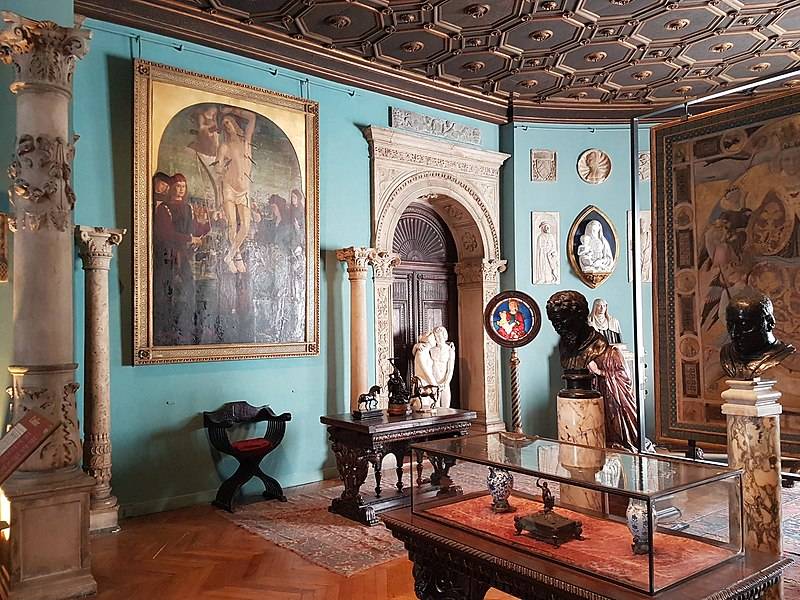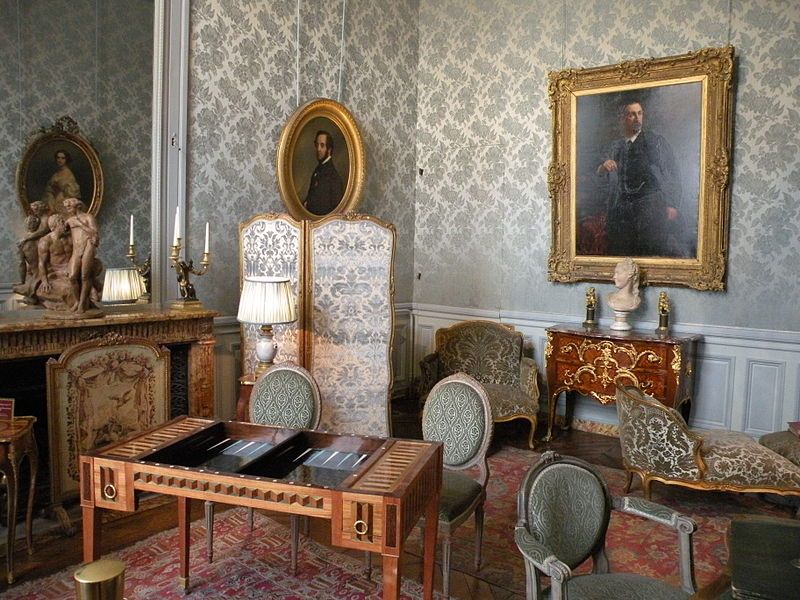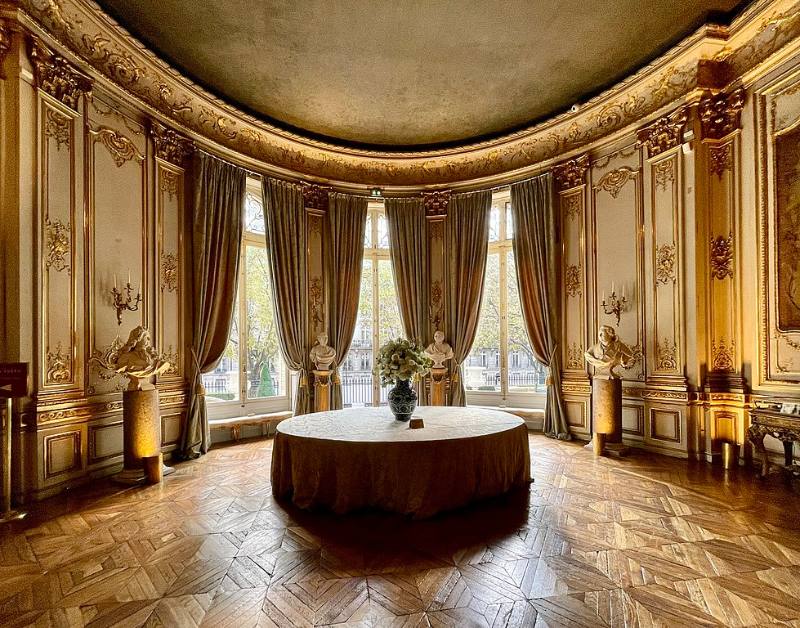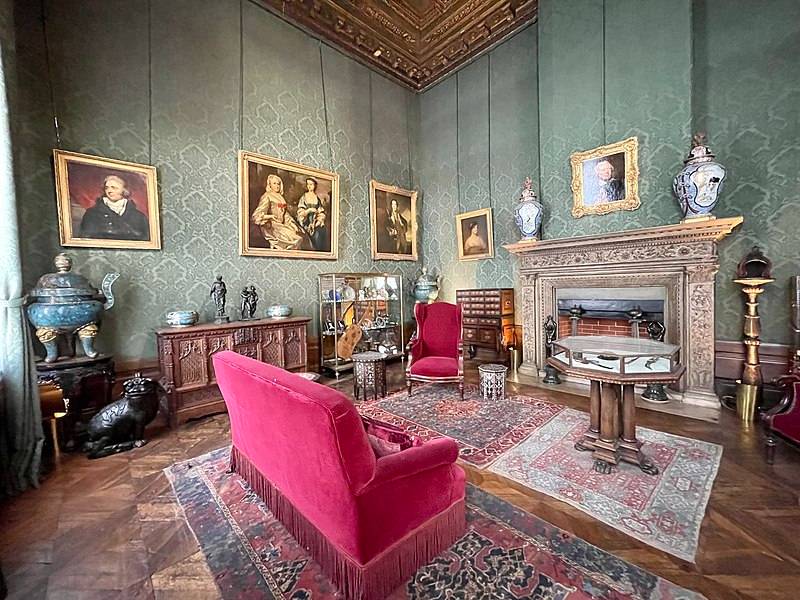Discover the lavish lifestyles of Paris’s elite in the 19th century. Musée Jacquemart-Andre, located in a magnificent Belle Epoque palace, is well worth your time and money. The museum’s art collection, thanks to the hard work of ambitious art lovers Edouard André and Nélie Jacquemart, is also worth visiting.
L'Institut de France possède Musée Jacquemart-André. Il est situé dans un beau domaine Second Empire. Ce musée présente des trésors d'art dignes des plus grands artistes du monde. musées. On compare souvent ce Parisien musée à la Frick Collection à New York, mais il a conservé son aspect somptueux.
Guests can explore several rooms from the 1800s, including private apartments, a grand staircase, and a winter garden.
Table des matières
- Histoire du musée Jacquemart-André
- Edouard André, un unique héritier
- Les débuts de Jacquemart-André : Une histoire d'amour
- Mort d'André et veuvage de Jacquemart
- Le décès de Jacquemart
- Divisions du musée Jacquemart-André
- Le musée italien
- Le jardin d'hiver
- Les appartements privés
- Les appartements d'État
- Les appartements informels
- Y arriver
- Visitez le musée Jacquemart-André !
- Find Things to Do in Paris
- Find Accommodation
- Explore Paris With Our Guides & Reviews
Histoire du musée Jacquemart-André
This private mansion was built at the end of the 19th century. Under Haussmann’s New Paris, Edouard André and his wife Nélie Jacquemart made their residence a museum. Visitors can see authentic rooms from the 19th century and international exhibitions that change often.
Edouard André, un unique héritier
Le 13 décembre 1833, le jeune Edouard André entre au monde. Il était membre d'une famille prospère de banquiers protestants prospères du sud-est de la France. Les Andrés ont fait fortune sous le Second Empire.
Edouard’s grandfather established the André Banque with the help of François Cottier. They agreed it would benefit their children, Ernest André and Louise Mathilde Cottier, to marry each other and bring their families together. The couple had only one kid, a boy named Edouard.
Edouard a commencé à collectionner des œuvres d'art vers l'âge de 30 ans. Ses premières acquisitions comprenaient des œuvres de Delacroix et d'autres artistes de l'école de Barbizon. En 1860, Napoléon III confie au préfet le baron Haussmann une vaste initiative d'urbanisme qui modifiera à jamais l'aspect de Paris. Des quartiers entiers ont été démolis et des axes rectilignes ont été tracés depuis la périphérie de la ville vers son centre historique. Napoléon III demande directement à Edouard de diriger la section des beaux-arts de l'Exposition Universelle en 1867.
En 1869, Edouard confie à l'architecte Henri Parent un projet d'envergure : sa propre maison. Le manoir sur la nouvelle construction Boulevard Haussmannien ferait sensation. Il fallut sept ans pour achever le bâtiment dans lequel Edouard emménagea en 1875.
Voir connexe : Faits amusants et intéressants sur Paris
Les débuts de Jacquemart-André : Une histoire d'amour
To have a likeness painted of him, he commissioned Nélie Jacquemart in 1872. They met, fell in love, and got married. Nélie and Edouard did not have children, so they decided to pursue their passion in the arts. The couple embarked on a global journey during which they amassed one of the world’s finest private art collections. The couple visited Italie souvent, acquérant finalement l'une des meilleures collections d'art italien de France.
A la mort d'Edouard André, Nélie Jacquemart achève la décoration du Musée italien. Elle se rend ensuite en Orient pour trouver des pièces plus précieuses à ajouter à la collection. Conformément à ce qu'elle et son mari avaient prévu, elle lègue l'hôtel particulier et ses collections à l'Institut de France pour en faire un musée ouvert au public en 1913.
Mort d'André et veuvage de Jacquemart
Edouard André est décédé à l'âge de soixante ans, ce qui a laissé son épouse extrêmement triste. La douleur de sa perte a été aggravée par quelque chose auquel elle ne s'attendait pas : la famille de son mari a intenté une action en justice pour récupérer son argent.
Nélie a continué à enrichir les collections toute seule. Elle commence à voyager à travers le monde en 1902. Au moment du mariage, les cousins d'Edouard veillent à ce que la fortune familiale puisse être reconquise. Mais juste avant de mourir, Edouard rédige un testament qui donne à sa femme tout ce qu'il possède. Ainsi, Nelie a gagné le procès !
Le décès de Jacquemart
Nélie décède le 15 mai 1912. Le propriétaire lègue l'hôtel à l'Institut de France par testament quelques mois plus tôt. Dans son testament, elle a déclaré vouloir que les collections soient montrées au plus grand nombre et mises à la disposition du plus grand nombre.
Nélie Jacquemart était une personne très pratique qui avait pensé à tout. Elle a même indiqué dans son testament comment le musée devait ouvrir et où chaque pièce devait se trouver. Elle a demandé à l'Institut de France, destinataire de son testament, de suivre ces règles à la lettre.
Raymond Poincare, the President of the Republic at the time, opened the Musée Jacquemart-André on December 8, 1913, with a lot of pomp and ceremony. It was a huge hit immediately, making people think of Andrés. The next day, 800 people went to the Museum; the next Sunday, 1,700 people went.
Divisions du musée Jacquemart-André
Le musée italien

La Galerie de Sculptures possède des collections de sculptures italiennes des XVe et XVIe siècles. Il y a des œuvres d'artistes tels que Francesco Laurana, Donatello et Luca Della Robbia.
The Florentine Gallery is a place of worship and a museum of art from the Florentine school. It has works by Botticelli, Francesco Botticini, Perugino, and Ucello’s St. George and the Dragon, considered one of the best paintings ever made.
In the Venetian gallery, you can see how much Andrés loves Venetian painters from the 1500s. Paintings by Mantegna, Bellini, and Carpaccio perfectly capture the grand atmosphere of a Venetian palazzo, as well as a coffered ceiling thought to have been made by Mocetto.
Le jardin d'hiver
Henri Parent designed the Winter Garden to outdo Charles Garnier, who had just finished construction on the brand new Opéra Garnier. This was the most eye-catching space at the mansion’s initial unveiling. There is no denying that the winter garden is this mansion’s crowning glory.
The Winter Garden’s exotic plant collection was skillfully imported from Great Britain and placed in a glass atrium. Throughout the lengthy parties, guests might relax in the tranquil setting amid the lush vegetation. The impressive double helix staircase may be found just inside the marble foyer.
Les appartements privés
Une partie du niveau inférieur du manoir est dédiée aux appartements privés des Andrés.
La chambre d'Édouard

Both his bedroom and the bathroom next to it were redone after he died. They now have more of a feminine touch. Carpeaux gives a plaster bust of B.V.R.B. and a chest of drawers from the Transition period. Even though it looks like the emperor, it is actually Edouard André. It is best for Nélie to show how much she loves and respects her husband.
L'Antichambre

The couple liked to meet in the antechamber between their two bedrooms. They ate breakfast here every morning, surrounded by pictures of their families. The portrait of Edouard that Nélie painted in 1872 is one of the most important. Edouard André’s memory is always here. Things like his father’s wallet and a list of “who’s who” from his time as a member of the National Assembly reminds us of his presence.
La chambre de Nélie

The private apartments in the residence are three rooms set apart from the reception rooms on the ground floor. Nélie Jacquemart sought to relive the ambiance of Louis XV’s reign in her bedroom. She put old wood paneling around a large daybed and put several of her most lovely pieces of furniture and many of the small tables she liked to surround herself with. On the walls are silks from Lyon and two pastel paintings. She built a small sitting room with a conservatory on the terrasse, qu'elle a transformé en bureau.
Les appartements d'État
Pour accueillir leurs invités les plus dignes, les Andres aménagent les State Rooms. Leur admiration pour les impressionnistes français et les arts ornementaux du XVIIIe siècle transparaît dans ces œuvres.
Le Grand Salon

Edouard André hosted his visitors there. He would have the walls between the Picture Gallery, the Grand Salon, and the neighboring Music Room slid aside using hydraulic cylinders to accommodate huge parties. Edouard André and Nélie Jacquemart entertained the one thousand Paris elite members at their lavish parties in this mansion.
The salon’s semi-circular shape sets it apart from the other rooms. It recalls the 18th-century preference for curves over straight lines in interior design. Furniture, antique artifacts, and style replicas coexist in one harmonious ensemble, characteristic of the decorative art of the time, which we now call eclecticism.
There are no paintings since the room is not conducive to them. However, it is a lovely gallery of sculptures made up of marble busts from the 18th century.
La galerie de photos

The Picture Gallery serves as an antechamber to the Grand Salon. Three large windows on the outside provide ambient lighting as guests make their way inside the State Apartments. Visitors may follow the presentation, which shifts from ornamental pieces to overdoors, mythical compositions to still life, landscapes to portraits, as Edouard André and his wife planned.
La salle de musique
La salle de musique est le deuxième espace d'accueil spacieux. Cette chambre est caractéristique du Second Empire, avec ses murs pourpres et son mobilier en bois sombre. Au fur et à mesure que la collection augmentait, les peintures qui ornaient la zone étaient fréquemment remplacées. Cela nous transporte dans la France du XVIIIe siècle.
La salle à manger
This room’s size and decor quality attest to its significance in the estate’s routine running. The room’s sideboards are a collection of Louis XV console tables in gold and carved wood, and the mantel features a bust of Mrs. André. A group of five tapestries depicting Achilles’ exploits in the Trojan War, created in Brussels in the 18th century, adorn the wall above the bust. The colors are very vibrant and new-looking.
Les appartements informels
The Andrés would meet with their business contacts in a series of smaller, less formal salons, which were classily spruced up.
Les salles de tapisserie et d'étude

Une série d'appartements privés, dont le Salon des Tapisseries, sont réservés par Edouard André et son épouse pour leur vie personnelle et professionnelle. Ils possèdent également un bureau qu'Edouard André puis Nélie Jacquemart utilisaient pour mener leurs opérations quotidiennes et leurs réunions d'affaires.
Le Boudoir
Nélie Jacquemart’s boudoir and the adjoining room were originally designed to serve as parts of her private residences, with the latter as her bathtub and the former as her bedroom. However, Nélie changed her mind a few years later and had a new room built just next to her husband’s. It was at this moment that this space became a boudoir.
La bibliothèque
The library, the most private space in the house, was once Nélie Jacquemart’s bedroom. The couple came here to review catalogs and make decisions about future purchases.
Le fumoir

Finally, the Smoking Room. Men can gather around the fireplace here for after-dinner discussions. While Nélie retreated to a cozy sitting room to regale her friends with tales of her adventures in Italy, Edouard ushered the men here for a cigarette and discussed business or travels.
Voir connexe : Monuments historiques à Paris
Y arriver
L'histoire de Musée Jacquemart-André est magnifique et je sais que cela a piqué votre intérêt. D'un manoir rempli d'amour à un musée fait avec amour, le musée Jacquemart-André représente parfaitement le Paris romantique. Si vous souhaitez visiter cet endroit magnifique, voici ce que vous devez savoir.
L'adresse du Musée Jacquemart-André est 158 Boulevard Haussmann 75008 Paris. Plusieurs attractions réputées sont accessibles à pied, notamment l'Armagnac Castarède, la Librairie Auguste Blaizot et Musée Nissim de Camondo.
You can take Métro Lines 9 and 13 to Saint-Augustin, Miromesnil, or Saint-Philippe du Roule stations. If you prefer to take the bus, take bus lines 22, 43, 52, 54, 28, 80, 83, 84, or 93.
If you want to bring your vehicle, you need not worry. Parking is available at Parking Haussmann-Berri, which is located just outside the museum and is open 24 hours a day.
Visitez le musée Jacquemart-André !
En revue, Musée Jacquemart-André is a world apart from most museums. It is an authentic estate built in the nineteenth century by a couple who spent their lives together. It is filled with incredible artwork and collectibles hand-picked by the same couple. Remember to look up! The stunning frescoes adorning most of the ceiling are a sight to behold.
Ressources associées
- Musées gratuits à Paris
- Meilleures choses à faire près de la Tour Eiffel
- Quelle est la meilleure période pour visiter Paris ?